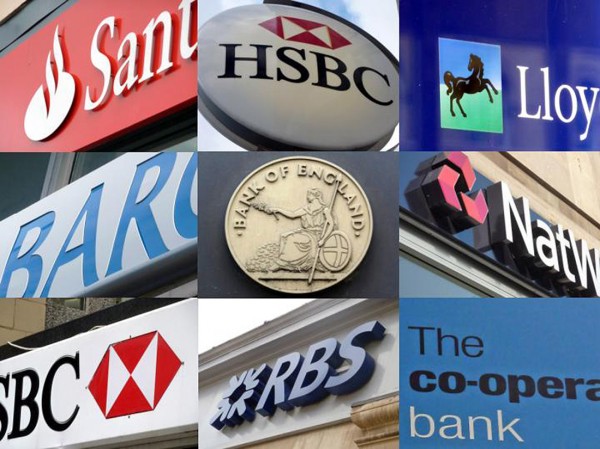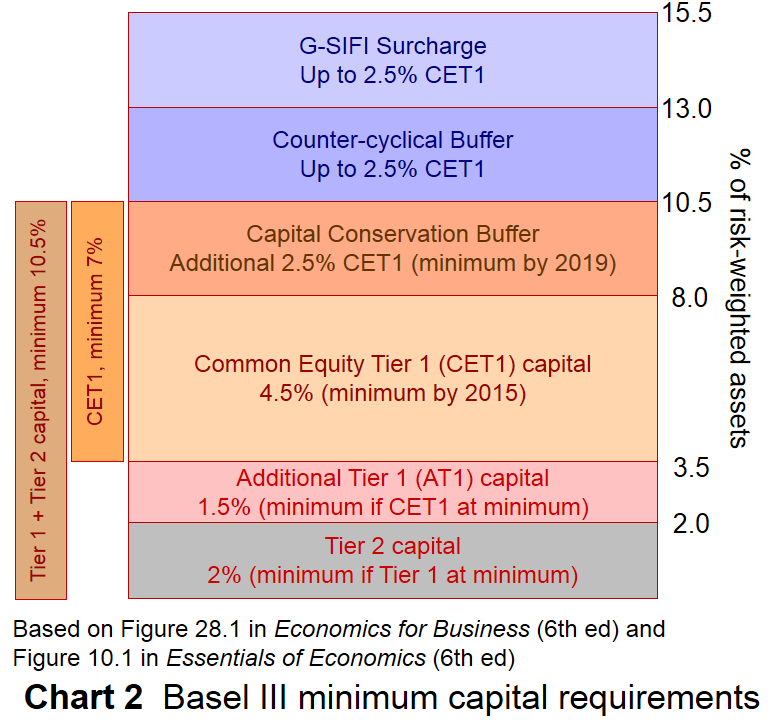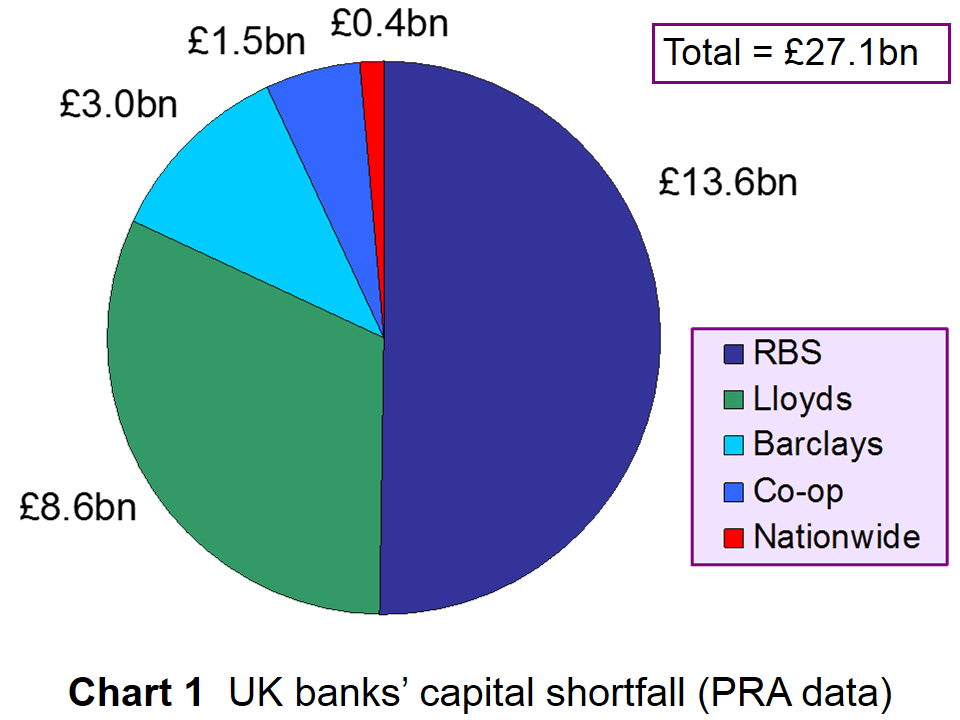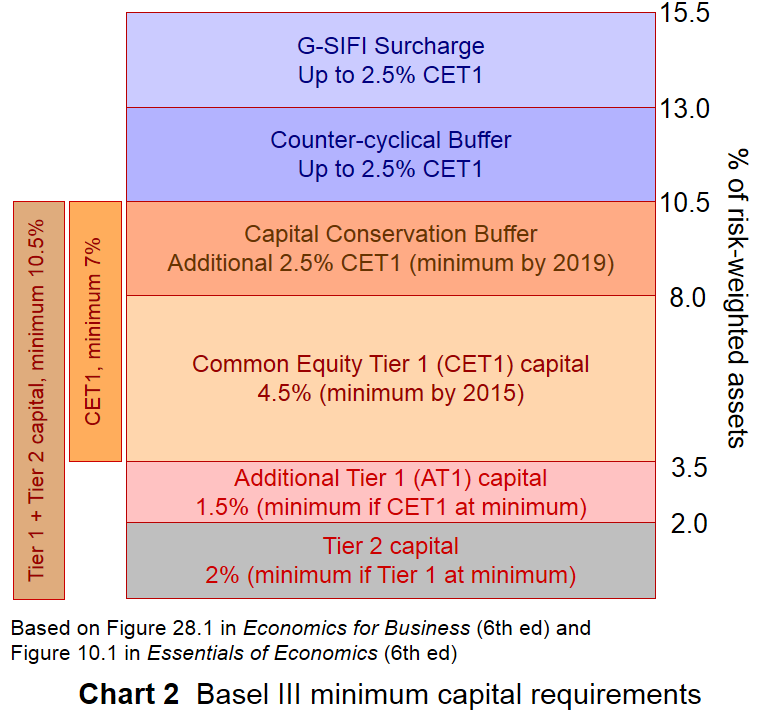 Christine Lagarde, managing director of the IMF, has warned of the danger of deflation in the eurozone. She also spoke of the risks of a slowdown in the developing world as the Fed tapers off its quantitative easing programme – a programme that has provided a boost to many emerging economies.
Christine Lagarde, managing director of the IMF, has warned of the danger of deflation in the eurozone. She also spoke of the risks of a slowdown in the developing world as the Fed tapers off its quantitative easing programme – a programme that has provided a boost to many emerging economies.
Speaking at the World Economic Forum, in the Swiss Alps, she did acknowledge signs of recovery across the world, but generally her speech focused on the risks to economic growth.
Some of these risks are old, such as a lack of fundamental bank reform and a re-emergence of risky behaviour by banks. Banks have taken steps towards recapitalisation, and the Basel III rules are beginning to provide greater capital buffers. But many economists believe that the reforms do not go far enough and that banks are once again beginning to behave too recklessly.
 Some of the risks are new, or old ones resurfacing in a new form. In particular, the eurozone, with inflation of just 0.8%, is dangerously close to falling into a deflationary spiral, with people holding back on spending as they wait for prices to fall.
Some of the risks are new, or old ones resurfacing in a new form. In particular, the eurozone, with inflation of just 0.8%, is dangerously close to falling into a deflationary spiral, with people holding back on spending as they wait for prices to fall.
Another new risk concerns the global impact of the Fed tapering off its quantitative easing programme (see Tapering off? Not yet). This programme has provided a considerable boost, not just to the US economy, but to many emerging economies. Much of the new money flowed into these economies as investors sought better returns. Currencies such as the Indian rupee, the Brazilian real and the Turkish lira are now coming under pressure. The Argentinean peso has already been hit by speculation and fell by 11% on 24/1/14, its biggest one-day fall since 2002. Although a fall in emerging countries’ currencies will help boost demand for their exports, it will drive up prices in these countries and put pressure on central banks to raise interest rates.
Christine Lagarde was one of several speakers at a session titled, Global Economic Outlook 2014. You can see the complete session by following the link below.
Articles
Lagarde warns of risks to global economic recovery TVNZ (27/1/14)
Lagarde Cautions Davos on Global Deflation Risk Bloomberg News, Ian Katz (26/1/14)
Davos 2014: Eurozone inflation ‘way below target’ BBC News (25/1/14)
IMF fears global markets threat as US cuts back on cash stimulus The Guardian, Larry Elliott and Jill Treanor (25/1/14)
Davos 2014: looking back on a forum that was meant to look ahead The Guardian, Larry Elliott (26/1/14)
Speeches at the WEF
 Global Economic Outlook 2014 World Economic Forum (25/1/14)
Global Economic Outlook 2014 World Economic Forum (25/1/14)
Questions
- Why is deflation undesirable?
- What are the solutions to deflation? Why is it difficult to combat deflation?
- What are the arguments for the USA tapering off its quantitative easing programme (a) more quickly; (b) less quickly?
- How is tapering off in the USA likely to affect the exchange rates of the US dollar against other currencies? Why will the percentage effect be different from one currency to another?
- What are Japan’s three policy arrows (search previous posts on this site)? Should the eurozone follow these three policies?
 On 15 September 2008, Lehman Brothers, the fourth-largest investment bank in the USA, filed for bankruptcy. Although the credit crisis had been building since mid 2007, the demise of Lehmans was a pivotal event in the unfolding of the financial crisis and the subsequent severe recession in most developed economies. Banks were no longer seen as safe and huge amounts of government money had to be poured into banks to shore up their capital and prevent further bankruptcies. Partial nationalisation seemed the only way of rescuing several banks and with it the global financial system.
On 15 September 2008, Lehman Brothers, the fourth-largest investment bank in the USA, filed for bankruptcy. Although the credit crisis had been building since mid 2007, the demise of Lehmans was a pivotal event in the unfolding of the financial crisis and the subsequent severe recession in most developed economies. Banks were no longer seen as safe and huge amounts of government money had to be poured into banks to shore up their capital and prevent further bankruptcies. Partial nationalisation seemed the only way of rescuing several banks and with it the global financial system.
 A deep and prolonged recession followed (see Chart 1: click here for a PowerPoint). In response, governments pursued expansionary fiscal policies – at least until worries about rising government deficits and debt caused a lurch to austerity policies. And central banks pursued policies of near zero interest rates and subsequently of quantitative easing. But all the time debate was taking place about how to reform banking to prevent similar crises occurring in the future.
A deep and prolonged recession followed (see Chart 1: click here for a PowerPoint). In response, governments pursued expansionary fiscal policies – at least until worries about rising government deficits and debt caused a lurch to austerity policies. And central banks pursued policies of near zero interest rates and subsequently of quantitative easing. But all the time debate was taking place about how to reform banking to prevent similar crises occurring in the future.
Solutions have included reform of the Basel banking regulations to ensure greater capital adequacy.  The Basel III regulations (see Chart 2) demand considerably higher capital ratios than the previous Basel II regulations.
The Basel III regulations (see Chart 2) demand considerably higher capital ratios than the previous Basel II regulations.
Other solutions have included proposals to break up banks. Indeed, just this week, the Lloyds Banking Group has hived off 631 of its branches (one sixth of the total) into a newly reformed TSB. Another proposal is to ring-fence the retail side of banks from their riskier investment divisions. In both cases the aim has been to avoid the scenario where banks are seen as too big to fail and can thus rely on governments to bail them out if they run into difficulties. Such reliance can make banks much more willing to take excessive risks. Further details of the new systems now in place are given in the Robert Peston article below.
But many critics maintain that not nearly enough has been done. Claims include:
• The Basel III rules are not tough enough and banks are still being required to hold too little capital.
• Rewards to senior bankers and traders are still excessive.
• The culture of banking, as a result, is still too risk loving in banks’ trading arms, even though they are now much more cautious about lending to firms and individuals.
• This caution has meant a continuing of the credit crunch for many small businesses.
• Higher capital adequacy ratios have reduced bank lending and have thus had a dampening effect on the real economy.
• The so-called ring-fences may not be sufficient to insulate retail banking from problems in banks’ investment divisions.
• Banks are not being required to hold sufficient liquidity to allow them to meet customers’ demands for cash in all scenarios.
• Banks’ reliance on each other still leaves a systemic risk for the banking system as a whole.
• Fading memories of the crisis are causing urgency to tackle its underlying problems to diminish.
• Problems may be brewing in less regulated parts of the banking world, such as the growing banking sector in China.
The following articles look at the lessons of the banking crisis – those that have been learned and those that have not. They look at the measures put in place and assess whether they are sufficient.
Lehman Brothers collapse, five years on: ‘We had almost no control’ The Guardian, Larry Elliott and Jill Treanor (13/9/13)
Lehman Brothers collapse: five years on, we’re still feeling the shockwaves The Guardian, Larry Elliott (13/9/13)
Five years after Lehman, could a collapse happen all over again? The Observer, Larry Elliott and Jill Treanor (15/9/13)
Five years after Lehman, all tickety-boo? BBC News, Robert Peston (9/9/13)
What have we learned from the bank crash? Independent, Yalman Onaran, Michael J Moore and Max Abelson (14/9/13)
We’ve let a good financial crisis go to waste since Lehman Brothers collapsed The Telegraph, Jeremy Warner (12/9/13)
 The Lehman legacy: Lessons learned? The Economist (9/9/13)
The Lehman legacy: Lessons learned? The Economist (9/9/13)
The dangers of debt: Lending weight The Economist (14/9/13)
The Lehman anniversary: Five years in charts The Economist (14/9/13)
Questions
- Why did Lehman Brothers collapse?
- Explain the role of the US sub-prime mortgage market in the global financial crisis of 2007/8.
- In the context of banking, what is meant by (a) capital adequacy; (b) risk-based capital adequacy ratios; (c) leverage; (d) leverage ratios?
- Explain the Basel III rules on (a) risk-based capital adequacy (see the textbook and the chart above); (b) non-risk-based leverage (introduced in 2013: see here for details).
- Explain and comment on the following statement by Adair Turner: ‘We created an over-leveraged financial system and an over-leveraged real economy. We created a system such that even if the direct cost of bank rescue was zero, the impact of their near-failure on the economy was vast.’
- Under what circumstances might the global financial system face a similar crisis to that of 2007/8 at some point in the future?
- Why is there an underlying conflict between increasing banks’ required capital adequacy and ensuring a sufficient supply of credit to consumers and business? What multiplier effects are likely to occur from an increase in the capital adequacy ratio?
 In the blogs The capital adequacy of UK banks and A co-operative or a plc? we focus on how British banks continue to look to repair their balance sheets. To do so, banks need to ‘re-balance’ their balance sheets. This may involve them holding more reserves and equity capital and/or a less risky and more liquid profile of assets. The objective is to make banks more resilient to shocks and less susceptible to financial distress.
In the blogs The capital adequacy of UK banks and A co-operative or a plc? we focus on how British banks continue to look to repair their balance sheets. To do so, banks need to ‘re-balance’ their balance sheets. This may involve them holding more reserves and equity capital and/or a less risky and more liquid profile of assets. The objective is to make banks more resilient to shocks and less susceptible to financial distress.
This will take time and even then the behaviour of banks ought to look like quite different from that before the financial crisis. All of this means that we will need to learn to live with new banking norms which could have fundamental consequences for economic behaviour and activity.
The increasing importance of financial institutions to economic activity is known as financialisation. It is not perhaps the nicest word, but, in one way or another, we all experience it. I am writing this blog in a coffee shop in Leicester having paid for my coffee and croissant by a debit card. I take it for granted that I can use electronic money in this way. Later I am going shopping and I will perhaps use my credit card. I take this short term credit for granted too. On walking down from Leicester railway station to the coffee shop I walked past several estate agents advertising properties for sale. The potential buyers are likely to need a mortgage. In town, there are several construction sites as Leicester’s regeneration continues. These projects need financing and such projects often depend on loans secured from financial institutions.
 We should not perhaps expect economic relationships to look as they did before the financial crisis. The chart shows how levels of net lending by financial institutions to households have dramatically fallen since the financial crisis. (Click here for PowerPoint of chart.)
We should not perhaps expect economic relationships to look as they did before the financial crisis. The chart shows how levels of net lending by financial institutions to households have dramatically fallen since the financial crisis. (Click here for PowerPoint of chart.)
Net lending measures the amount of lending by financial institutions after deducting repayments. These dramatically smaller flows of credit do matter for the economy and they do affect important macroeconomic relationships.
Consider the consumption function. The consumption function is a model of the determinants of consumer spending. It is conventional wisdom that if we measure the growth of consumer spending over any reasonably long period of time it will basically reflect the growth in disposable income. This is less true in the short run and this is largely because of the financial system. We use the financial system to borrow and to save. It allow us to smooth our consumption profile making spending rather less variable. We can save during periods when income growth is strong and borrow when income growth is weak or income levels are actually falling. All of this means that in the short term consumption is less sensitive to changes in disposable income that it would otherwise be.
 The financial crisis means new norms for the banking system and, hence, for the economy. One manifestation of this is that credit is much harder to come by. In terms of our consumption function this might mean consumption being more sensitive to income changes that it would otherwise be. In other words, consumption is potentially more volatile as a result of the financial crisis. But, the point is more general. All spending activity, whether by households or firms, is likely to be more sensitive to economic and financial conditions than before. For example, firms’ capital spending will be more sensitive to their current financial health and crucially to their flows of profits.
The financial crisis means new norms for the banking system and, hence, for the economy. One manifestation of this is that credit is much harder to come by. In terms of our consumption function this might mean consumption being more sensitive to income changes that it would otherwise be. In other words, consumption is potentially more volatile as a result of the financial crisis. But, the point is more general. All spending activity, whether by households or firms, is likely to be more sensitive to economic and financial conditions than before. For example, firms’ capital spending will be more sensitive to their current financial health and crucially to their flows of profits.
We can expect particular markets and sectors to be especially affected by new financial norms. An obvious example is the housing market which is very closely tied to the mortgage market. But, any market or sector that traditionally is dependent on financial institutions for finance will be affected. This may include, for example, small and medium-sized enterprises or perhaps organsiations that invest heavily in R&D. It is my view that economists are still struggling to understand what the financial crisis means for the economy, for particular sectors of the economy and for the determination of key economic relationships, such as consumer spending and capital spending. What is for sure, is that these are incredibly exciting times to study economics and to be an economist.
Data
Statistical Interactive Database Bank of England
Articles
Cut in net lending to non-financial firms raises credit worries Herald Scotland, Mark Williamson (25/5/13)
Loans to business continue to shrink despite Funding for Lending Scheme Wales Online, Chris Kelsey (3/6/13)
Factbox – Capital shortfalls for five UK banks, mutuals Standard Chartered News (20/6/13)
UK banks ordered to plug £27.1bn capital shortfall The Guardian, Jill Treanor (20/6/13)
Barclays, Co-op, Nationwide, RBS and Lloyds responsible for higher-than-expected capital shortfall of £27.1bn The Telegraph, Harry Wilson (20/6/13)
UK banks need to plug £27bn capital hole, says PRA BBC News (20/6/13)
Barclays and Nationwide forced to strengthen BBC News, Robert Peston (20/6/13)
Five Banks Must Raise $21 Billion in Fresh Capital: BOE Bloomberg, Ben Moshinsky (20/6/13)
Co-operative Bank to list on stock market in rescue deal The Guardian, Jill Treanor (17/6/13)
Troubled Co-operative Bank unveils rescue plan to plug £1.5bn hole in balance sheet Independent, Nick Goodway (17/6/13)
Co-op Bank announces plan to plug £1.5bn hole Which?(17/6/13)
The Co-operative Bank and the challenge of finding co-op capital The Guardian, Andrew Bibby (13/6/13)
Co-op Bank seeks to fill £1.5bn capital hole Sky News (17/6/13)
Central banks told to head for exit Financial Times, Claire Jones (23/6/13)
Stimulating growth threatens stability, central banks warn The Guardian (23/6/13)
BIS Press Release and Report
Making the most of borrowed time: repair and reform the only way to growth, says BIS in 83rd Annual Report BIS Press Release (23/6/13)
83rd BIS Annual Report 2012/2013 Bank for International Settlements (23/6/13)
Questions
- What is meant by equity capital?
- How can banks increase the liquidity of their assets?
- Explain how Basel III is intended to increase the financial resilence of banks.
- What do you understand by the term ‘financialisation’? Use examples to illustrate this concept.
- How might we expect the financial crisis to affect the detemination of spending by economic agents?
- Using an appropriate diagram, explain how a reduction in capital spending could affect economic activity? Would this be just a short-term effect?
- What does it mean if we describe households as consumption-smoothers? How can households smooth their spending?
 The Prudential Regulation Authority is the new UK authority in charge of banking regulation and is part of the Bank of England. In a report published on 20/6/13, the PRA found that UK banks had a capital shortfall of £27.1 billion (see Chart 1 below for details) if they were to meet the 7% common equity tier 1 (CET1) ratio: one of the capital adequacy ratios (CARs) specified under the Basel III rules (see Rebuilding UK banks: not easy to do and Chart 2 below).
The Prudential Regulation Authority is the new UK authority in charge of banking regulation and is part of the Bank of England. In a report published on 20/6/13, the PRA found that UK banks had a capital shortfall of £27.1 billion (see Chart 1 below for details) if they were to meet the 7% common equity tier 1 (CET1) ratio: one of the capital adequacy ratios (CARs) specified under the Basel III rules (see Rebuilding UK banks: not easy to do and Chart 2 below).
CET1 includes bank reserves and ordinary share capital (‘equities’). To derive the CET1 ratio, CET1 is expressed as a percentage of risk-weighted assets. As Economics for Business (6th ed) page 467 states:
Risk-weighted assets are the total value of assets, where each type of asset is multiplied by a risk factor. …Cash and government bonds have a risk factor of zero and are thus not included. Inter-bank lending between the major banks has a risk factor of 0.2 and is thus included at only 20 per cent of its value; residential mortgages have a risk factor of 0.35; personal loans, credit-card debt and overdrafts have a risk factor of 1; loans to companies carry a risk factor of 0.2, 0.5, 1 or 1.5, depending on the credit rating of the company. Thus the greater the average risk factor of a bank’s assets, the greater will be the value of its risk weighted assets, and the lower will be its CAR.
 The data published by the PRA, based on end-2012 figures, show that the RBS group is responsible for around 50% of the capital shortfall, the Lloyds Banking Group around 32%, Barclays around 11%, the Co-operative around 5.5% and Nationwide the remaining 1.5%. HSBC, Santander and Standard Chartered met the 7% requirement. The PRA found that banks already were taking measures to raise £13.7bn, but this still leaves them requiring an additional £13.4 for current levels of lending.
The data published by the PRA, based on end-2012 figures, show that the RBS group is responsible for around 50% of the capital shortfall, the Lloyds Banking Group around 32%, Barclays around 11%, the Co-operative around 5.5% and Nationwide the remaining 1.5%. HSBC, Santander and Standard Chartered met the 7% requirement. The PRA found that banks already were taking measures to raise £13.7bn, but this still leaves them requiring an additional £13.4 for current levels of lending.
 So what can the banks do? They must either raise additional capital (the numerator in the CAR) or reduce their risk-weighted assets (the denominator). Banks hope to be able to raise additional capital. For example, Lloyds is planning to sell government securities and US mortgage-backed securities and hopes to have a CET1 ratio of around 10% by the end of 2013. Generally, the banks aim to raise the required level of capital through income generation, the sale of assets and restructuring, rather than from issuing new shares.
So what can the banks do? They must either raise additional capital (the numerator in the CAR) or reduce their risk-weighted assets (the denominator). Banks hope to be able to raise additional capital. For example, Lloyds is planning to sell government securities and US mortgage-backed securities and hopes to have a CET1 ratio of around 10% by the end of 2013. Generally, the banks aim to raise the required level of capital through income generation, the sale of assets and restructuring, rather than from issuing new shares.
What both the Bank of England and the government hope is that banks do not respond by reducing lending. While that might enable them to meet the 7% ratio, it would have an undesirable dampening effect on the economy – just at a time when it is hoped that the economy is starting to recover. As Robert Peston states:
I understand that both Barclays and Nationwide feel a bit miffed about being forced to hit this tough so-called leverage ratio at this juncture, because they are rare in that they have been supporting economic recovery by increasing their net lending.
They now feel they are being penalised for doing what the government wants. So I would expect there to be something of a spat between government and regulators about all this.
Articles
Factbox – Capital shortfalls for five UK banks, mutuals Standard Chartered News (20/6/13)
UK banks ordered to plug £27.1bn capital shortfall The Guardian, Jill Treanor (20/6/13)
Barclays, Co-op, Nationwide, RBS and Lloyds responsible for higher-than-expected capital shortfall of £27.1bn The Telegraph, Harry Wilson (20/6/13)
UK banks need to plug £27bn capital hole, says PRA BBC News (20/6/13)
Barclays and Nationwide forced to strengthen BBC News, Robert Peston (20/6/13)
Five Banks Must Raise $21 Billion in Fresh Capital: BOE Bloomberg, Ben Moshinsky (20/6/13)
Will Nationwide be forced to become a bank? BBC News, Robert Peston (4/7/13)
PRA news release and data
Prudential Regulation Authority (PRA) completes capital shortfall exercise with major UK banks and building societies Bank of England: Prudential Regulation Authority (20/6/13)
Questions
- Explain what are meant by the various Basel III capital adequacy requirements
- What are the banks which were identified as having a capital shortfall doing about it?
- Would it be desirable for banks to issue additional shares? Would this make the banks more secure?
- Would the raising of additional capital allow additional credit creation to take place? Explain.
- What other constraints are there on bank lending?
 The ‘Classical’ Treasury view of the 1920s and 30s was that extra government spending or tax cuts were not the solution to depression and mass unemployment. Instead, it would crowd out private expenditure if the money supply were not allowed to rise as it would drive up interest rates. But if money supply were allowed to rise, this would be inflationary. The solution was to reduce budget deficits to increase confidence in public finances and to encourage private investment. Greater price and wage flexibility were the answer to markets not clearing.
The ‘Classical’ Treasury view of the 1920s and 30s was that extra government spending or tax cuts were not the solution to depression and mass unemployment. Instead, it would crowd out private expenditure if the money supply were not allowed to rise as it would drive up interest rates. But if money supply were allowed to rise, this would be inflationary. The solution was to reduce budget deficits to increase confidence in public finances and to encourage private investment. Greater price and wage flexibility were the answer to markets not clearing.
Keynes countered these arguments by arguing that the economy could settle in a state of mass unemployment, with low confidence leading to lower consumer expenditure, lower investment, lower incomes and lower employment. The situation would be made worse, not better, by cuts in public expenditure or tax rises in an attempt to reduce the budget deficit. The solution was higher public expenditure to stimulate aggregate demand. This could be achieved by fiscal and monetary policies. Monetary policy alone could, however, be made ineffective by the liquidity trap. Extra money might simply be held rather than spent.
 This old debate has been reborn since the financial crisis of 2007/8 and the subsequent deep recession and, more recently, the lack of recovery. (Click here for a PowerPoint of the chart.)
This old debate has been reborn since the financial crisis of 2007/8 and the subsequent deep recession and, more recently, the lack of recovery. (Click here for a PowerPoint of the chart.)
The articles below consider the current situation. Many economists, but certainly not all, take a Keynesian line that austerity policies to reduce public-sector deficits have been counter-productive. By dampening demand, such policies have reduced national income and slowed the recovery in both investment and consumer demand. This has at best slowed the rate of deficit reduction or at worst even increased the deficit, with lower GDP leading to a reduction in tax receipts and higher unemployment leading to higher government social security expenditure.
Although monetary policy has been very loose, measures such as record low interest rates and quantitative easing have been largely ineffective in stimulating demand. Economies are stuck in a liquidity trap, with banks preferring to build their reserves rather than to increase lending. This is the result partly of a lack of confidence and partly of pressure on them to meet Basel II and III requirements of reducing their leverage.
But despite the call from many economists to use fiscal policy and more radical monetary policy to stimulate demand, most governments have been pre-occupied with reducing their deficits and ultimately their debt. Their fear is that rising deficits undermine growth – a fear that was given weight by, amongst others, the work of Reinhart and Rogoff (see the blog posts Reinhart and Rogoff: debt and growth and It could be you and see also Light at the end of the tunnel – or an oncoming train?.
 But there is some movement by governments. The new Japanese government under Shinzo Abe is following an aggressive monetary policy to drive down the exchange rate and boost aggregate demand (see A J-curve for Japan?) and, more recently, the European Commission has agreed to slow the pace of austerity by giving the Netherlands, France, Spain, Poland, Portugal and Slovenia more time to bring their budget deficits below the 3% of GDP target.
But there is some movement by governments. The new Japanese government under Shinzo Abe is following an aggressive monetary policy to drive down the exchange rate and boost aggregate demand (see A J-curve for Japan?) and, more recently, the European Commission has agreed to slow the pace of austerity by giving the Netherlands, France, Spain, Poland, Portugal and Slovenia more time to bring their budget deficits below the 3% of GDP target.
Of course, whether or not expansionary fiscal and/or monetary policies should be used to tackle a lack of growth does not alter the argument that supply-side policies are also required in order to increase potential economic growth.
A Keynesian Victory, but Austerity Stands Firm The New York Times, Business Day, Eduardo Porter (21/5/13)
With Austerity Under Fire, Countries Seek a More Balanced Solution Knowledge@Wharton (22/5/13)
Keynes, Say’s Law and the Theory of the Business Cycle History of Economics Review 25.1-2, Steven Kates (1996)
Is Lord Keynes back in Brussels? The Conversation, Fabrizio Carmignani (31/5/13)
Keynes’s Biggest Mistake The New York Times, Business Day, Bruce Bartlett (7/5/13)
Keynes’s Not So Big Mistake The New York Times, The Conscience of a Liberal blog, Paul Krugman (7/5/13)
The Chutzpah Caucus The New York Times, The Conscience of a Liberal blog, Paul Krugman (5/5/13)
Keynes and Keynesianism The New York Times, Business Day, Bruce Bartlett (14/5/13)
Japan Is About To Prove Keynesian Economics Entirely Wrong Forbes, Tim Worstall (11/5/13)
The poverty of austerity exposed Aljazeera, Paul Rosenberg (24/5/13)
Britain is a lab rat for George Osborne’s austerity programme experiment The Guardian, Larry Elliott (26/5/13)
Eurozone retreats from austerity – but only as far as ‘austerity lite’ The Guardian, Larry Elliott (30/5/13)
Europe’s long night of uncertainty Daily Times (Pakistan), S P Seth (29/5/13)
Abenomics vs. bad economics The Japan Times Gregory Clark (29/5/13)
European countries to be allowed to ease austerity BBC News (29/5/13)
U.K. Should Restore Growth, Rebalance Economy IMF Survey (22/5/13)
Now everyone is a Keynesian again – except George Osborne The Observer, William Keegan (2/6/13)
Austerity Versus Growth (III): Fiscal Policy And Debt Sustainability Social Europe Journal, Stefan Collignon (30/5/13)
Questions
- Explain what is meant by Say’s Law and its implication for macroeconomic policy.
- Why have many governments, including the UK government, been reluctant to pursue expansionary fiscal policies?
- What is meant by the liquidity trap? What is the way out of this trap?
- In the first article above, Eduardo Porter argues that ‘moral views are getting in the way of reason’. What does he mean by this?
- Explain what are meant by the ‘paradox of thrift’ and the ‘fallacy of composition’. How are these two concepts relevant to the debate over austerity policies?
- What are the dangers in pursuing aggressive Keynesian policies?
- What are the dangers in not pursuing aggressive Keynesian policies?
 Christine Lagarde, managing director of the IMF, has warned of the danger of deflation in the eurozone. She also spoke of the risks of a slowdown in the developing world as the Fed tapers off its quantitative easing programme – a programme that has provided a boost to many emerging economies.
Christine Lagarde, managing director of the IMF, has warned of the danger of deflation in the eurozone. She also spoke of the risks of a slowdown in the developing world as the Fed tapers off its quantitative easing programme – a programme that has provided a boost to many emerging economies. Some of the risks are new, or old ones resurfacing in a new form. In particular, the eurozone, with inflation of just 0.8%, is dangerously close to falling into a deflationary spiral, with people holding back on spending as they wait for prices to fall.
Some of the risks are new, or old ones resurfacing in a new form. In particular, the eurozone, with inflation of just 0.8%, is dangerously close to falling into a deflationary spiral, with people holding back on spending as they wait for prices to fall. Global Economic Outlook 2014 World Economic Forum (25/1/14)
Global Economic Outlook 2014 World Economic Forum (25/1/14)










